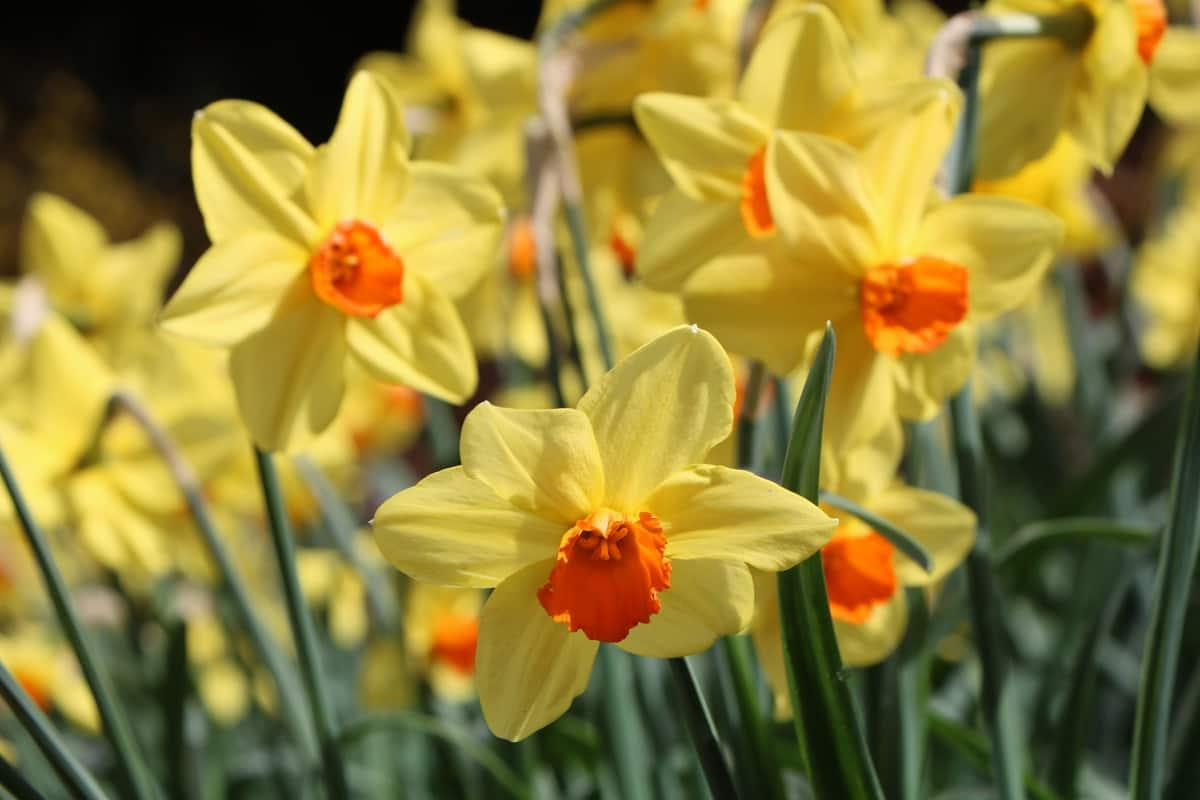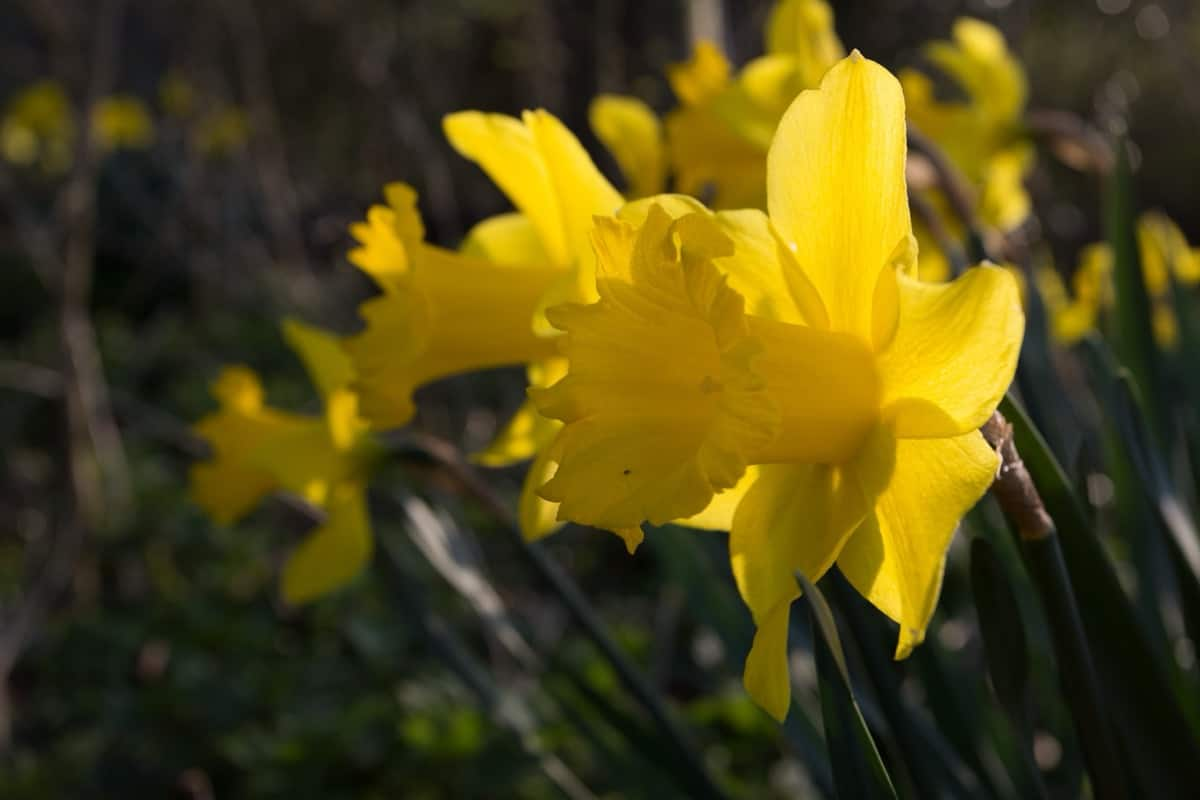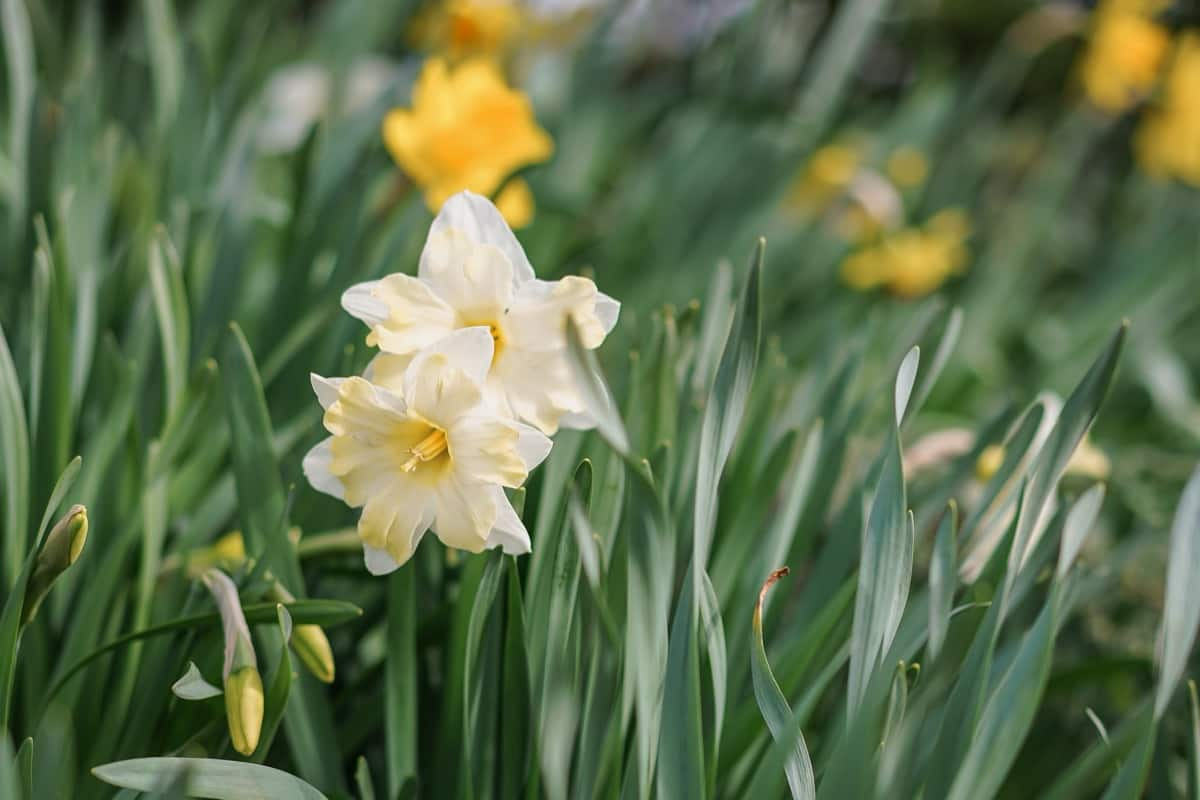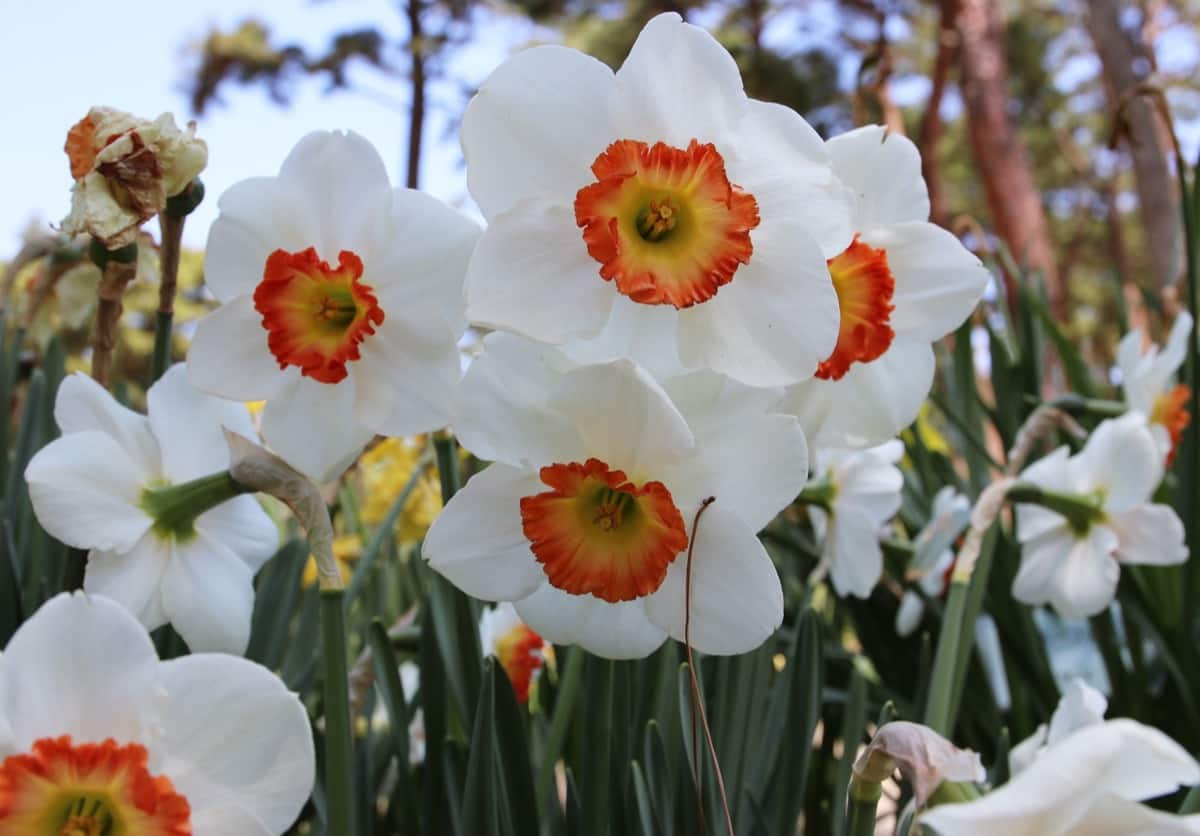Daffodil pests must be controlled naturally to preserve these spring flowers. This guide will discuss eco-friendly ways to control common daffodil pests without chemicals. Help your daffodils thrive with safe, organic treatments.

How to Control Daffodil Pests Naturally
What is a Daffodil? What are its Major Characteristics?
A daffodil is a stunning spring flower distinguished by its trumpet-shaped center and vivid yellow or white petals. These cheery narcissus flowers are widely used in gardens across the globe. Early spring is when daffodils usually blossom, signaling the start of warmer weather. They require sunlight to flourish and do best in well-drained soil.
Their unique trumpet-shaped corona encircled by six petals is one of their defining features. Daffodils are popular among gardeners because they are simple to maintain and increase over time. In many cultures, they symbolize hope and happiness because they represent rebirth and fresh starts.
Understanding Daffodil Pests: Identifying Common pests and Their Damage
Daffodil pests must be understood to keep gardens healthy. Slugs, aphids, and narcissus bulb flies are common culprits. Leaves yellow and curl due to sap-sucking aphids. Slugs rip daffodil leaves and flowers. Daffodil bulbs rot when narcissus bulb flies lay eggs. Look for pest damage to identify them. Neem oil for aphids, slug traps, and fly inspections before planting are natural remedies that can protect daffodils. Daffodils need regular monitoring and early intervention to stay healthy and pest-free.
Prevention is Key: Implementing Effective Strategies to Control Daffodil Pests
Healthy daffodil blooms require pest prevention. Start by planting daffodil bulbs in well-drained soil without crowding. Remove dead foliage to keep your garden tidy; pests hide there. Daffodils should be checked for yellowing leaves and chewed petals. Pick up pests by hand or spray them with soapy water to deter them. For natural pest control, plant marigolds or garlic. Finally, keep your garden clean to deter pests. Prevention is the best way to keep daffodils healthy and pest-free.
In case you missed it: How to Control Watermelon Pests Naturally: How to Get Rid of Them with Natural and Organic Treatment

Natural Remedies for Daffodil Pest Control: Harnessing the Power of Companion Planting
Companion planting is an efficient way to obtain natural pest control for daffodils. Common pests can be discouraged by planting daffodils with companion plants that repel pests, such as garlic, alliums, or marigolds. These companion plants lessen the chance of infestations by emitting smells or compounds that pests find repulsive.
In addition, beneficial insects like ladybugs and lacewings feed on daffodil pests like thrips and aphids. Calendula or alyssum are two flowers rich in nectar that will draw them to your garden. Using these easy methods, you can keep pests from your daffodils without harsh chemicals, maintaining your garden’s aesthetic appeal and environmental friendliness.
Organic Treatments for Daffodil Pests: Utilizing Safe and Environmentally Friendly Solutions
Natural solutions to eradicate daffodil pests efficiently keep your lovely blossoms intact and safe for the environment. Harvesting pests such as aphids, snails, and slugs by hand is one of the easiest ways to take care of your daffodils. You can also plant companion flowers nearby, such as marigolds and garlic, to repel pests.
For more tenacious insects, use a small amount of neem oil, a natural insecticide. Additionally, daffodils are more pest-resistant when the soil is kept in good condition with compost and appropriate watering. These environmentally responsible methods preserve your daffodils without endangering the ecosystem or helpful insects, guaranteeing a colorful and flourishing landscape.
Creating a Healthy Garden Ecosystem: Attracting Beneficial Insects to Combat Daffodil Pests
- Plant Diversity: Grow various flowers and herbs to lure beneficial insects with diverse food sources and shelter.
- Native Plants: Opt for native plants as they attract local beneficial insects accustomed to your area.
- Minimize Chemicals: Avoid pesticides that harm both good and bad bugs. Organic gardening methods are key.
- Water and Habitat: Provide water sources like shallow dishes and create suitable habitats, such as log piles or insect hotels.
- Patience: It may take time for the beneficial insects to establish themselves. Be patient; your garden will find its natural balance, keeping daffodil pests in check without harming the environment.
Homemade Pest Repellents: DIY Recipes to Deter Daffodil Pests Naturally
Homemade Garlic and Chili Pepper Spray
Ingredients
- Ten cloves of garlic
- 2-3 hot chili peppers
- 1 quart of water
- A few drops of dish soap
Instructions
- Crush the garlic cloves and chop the chili peppers.
- Combine them in a quart of water and let it sit overnight.
- Strain the mixture and add a few little drops of dish soap solution to the mixture.
- Spray the solution on and around your daffodils to repel pests.
In case you missed it: How to Control Lily Pests Naturally: How to Get Rid of Them with Natural and Organic Treatment

Physical Barriers and Traps: Physical Methods to Keep Daffodils Pests at Bay
- Physical Barriers: Installing physical barriers like fencing or netting around your daffodils can prevent pests like rabbits and deer from munching on your plants. Make sure the barriers are tall enough to deter these animals.
- Traps: Yellow sticky traps are great for flying pests like aphids and thrips. These traps use bright colors to attract pests, and the sticky surface catches them when they land. Place these traps near your daffodils to reduce pest populations.
Soil Management Techniques: Enhancing Soil Health to Reduce Daffodil Pest Infestations
- Crop Rotation: Avoid planting daffodils in the same spot every year. Rotate them with other plants to disrupt pest cycles.
- Healthy Soil: Improve soil fertility with organic matter like compost. Healthy soil grows stronger plants that pests find less appealing.
- Proper Watering: Don’t overwater; daffodils prefer slightly dry conditions. This prevents root rot and discourages certain pests.
- Mulching: Apply mulch to conserve soil moisture and deter pests. Mulch made from organic materials can also improve soil health over time.
- Natural Predators: Encourage beneficial insects like ladybugs and lacewings that eat daffodil pests.
Proper Watering and Fertilization Practices: Maintaining Vigorous Daffodil to Resist Pests
Applying the right amount of fertilizer and watering is necessary to keep daffodils pest-resistant. Water your daffodils generously but sparingly to deter pests, letting the soil dry out a little between applications. Maintain adequate drainage to avoid root rot. Plant bulbs in early spring and fertilize them with a balanced, slow-release fertilizer.
High-nitrogen fertilizers should be avoided as they may draw pests. For daffodils to grow strongly and naturally fend off pests, they need nutrition. These tips will help you grow robust daffodils resistant to common pests so your yard will produce stunning blossoms that withstand insect damage.
Integrated Pest Management (IPM) for Daffodil: A Holistic Approach to Pest Control
Daffodil integrated pest management (IPM) is a sensible and environmentally responsible solution to safeguard your gorgeous blooms. It entails employing various techniques in place of harsh chemicals to control pests. Daffodils should first be planted in well-drained soil with enough water and sunlight.
Check your plants often for insect evidence, such as aphids or bulb flies. Consider employing ladybugs or other naturally occurring predators or practicing companion planting with insect-repelling flowers if you find any. Horticultural oils or hand-picking the pests are further options. By combining these measures, you may minimize environmental damage while maintaining the health and beauty of your daffodils.
In case you missed it: How to Control Pepper Plant Pests Naturally: How to Get Rid of Them with Natural and Organic Treatment

Daffodil Pest Control with Natural and Organic Treatment
| Pest | Natural and Organic Treatment | How to Apply |
| Aphids | Neem oil or insecticidal soap spray | Spray on affected parts, including leaves |
| Bulb Flies | Plant daffodil bulbs with garlic or onions | Plant these bulbs near daffodils |
| Slugs | Diatomaceous earth or copper barriers | Create a barrier around daffodil beds |
| Snails | Beer traps or crushed eggshells | Bury containers with beer or scatter eggshells |
Conclusion
You can protect your daffodils from pests organically and naturally. Important tactics include recognizing and identifying typical offenders, preventing them through good gardening techniques, and employing companion planting as a pest deterrent. Healthy, pest-resistant daffodils can be maintained without endangering the environment through natural repellents, physical barriers, soil management, and integrated pest management.
- Beneficial Insects in Pest Management
- Natural Solutions for Pest Control in Flower Gardens
- Types of Fungicides Used in Agriculture
- Common Issues in the Fruit Development Stage of Pomegranate Farming
- Fruit Development Issues in Papaya: Easy Solutions and Treatment
- Soil-Borne Diseases and How to Protect Your Plants
- Practices to Prevent Disease Spread in the Garden
- From Wilted to Thriving: How to Treat Root Rot Naturally in Houseplants
- Natural Remedies to Cure Brown Spots on Fig Tree Leaves